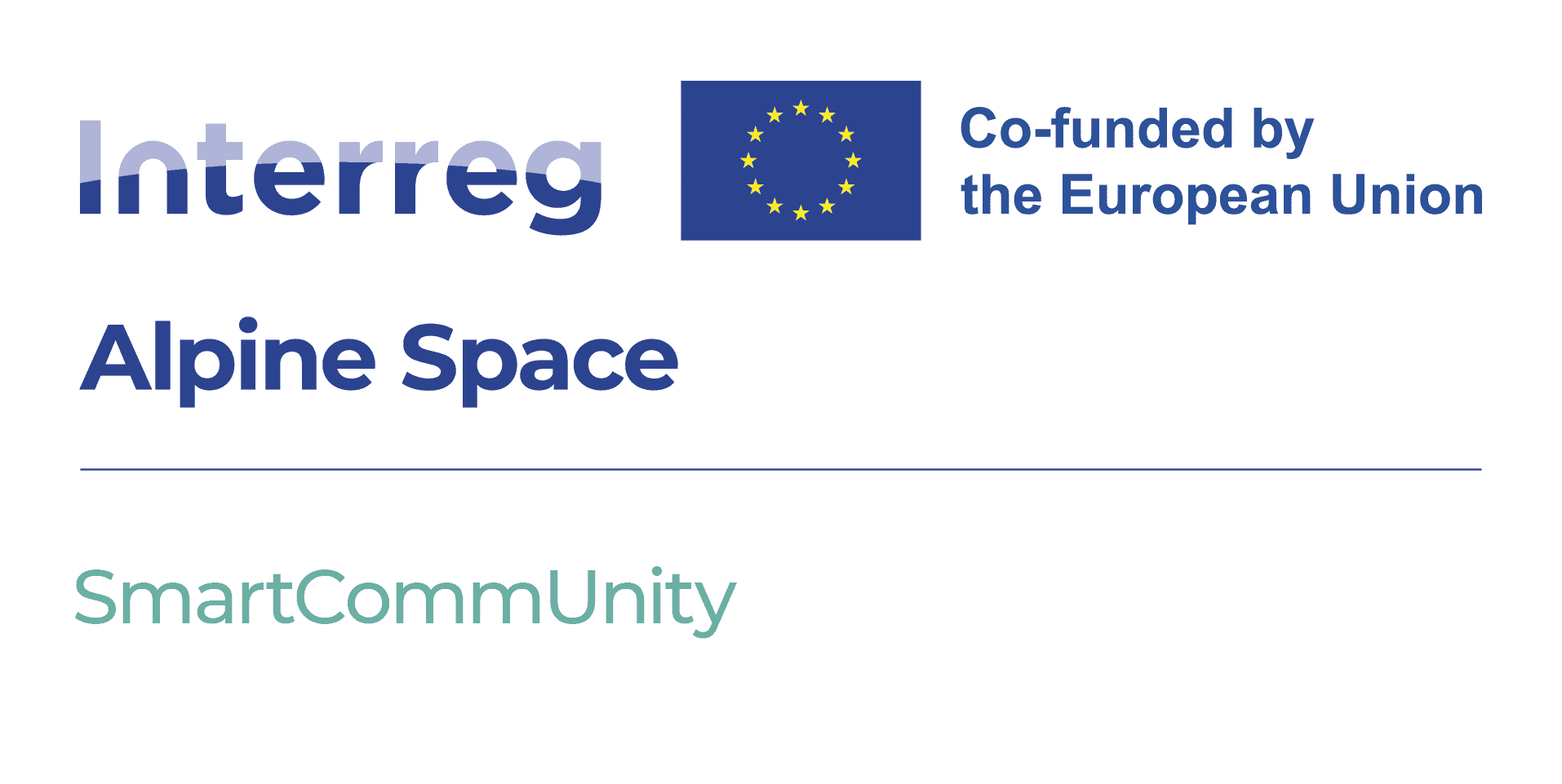
Overview
Rural and mountain areas suffer from depopulation and economic decline due to a lack of (public) services and digital infrastructure and skills. Digitalisation represents a major opportunity for these regions to increase their attractiveness as places to work and live, compared to urban centres. SmartCommUnity aims to create a transnational community to change both the practices and perceptions of smart rural areas. In close cooperation with the European Strategy for the Alpine Region (EUSALP), the project partners will facilitate capacity building of rural areas, promote existing digital tools and solutions and develop innovative and interactive digital tools to foster the "smart transition" of Alpine areas, taking into account community and sustainability aspects.
Factsheet
- 2021 – 2027
- Innovation and digitalisation supporting a green Alpine region
- SO 3.2 - Reaping the benefits of digitisation for citizens, companies, research organisations and public authorities
-
- AG5 Connectivity & accessibility
- AG9 Energy efficiency and renewable energy
- 11/2022
- 10/2025
- 2.960.288 EUR
- 1.883.351 EUR
Description
Europe’s rural and mountain areas, both in perceptions and in practice, still lack urban areas’ level of attractiveness to work and live, the same level of (public) services, the same level of innovation in the economy and the same awareness of their own assets. This is mostly due to a lack of digital infrastructure, a lack of high-level (public) services, a gap in digital skills and competences, a lack of tailored smart actions and policies and a subsequent lack of economic opportunities that often result in instances of depopulation and economic decline. Digitalization is an opportunity for rural and mountain areas to catch up with the assets urban centres have.
The SmartCommUnity project aims to support Alpine rural areas, using all the benefits of digitalization, embracing smart transitions and creating a functional transnational community within EUSALP AG5 Smart Alps. Interactive and user-friendly digital tools enhancing transnational matchmaking and leading-by example will empower new areas to follow more advanced areas, and territories will develop a community approach to create smarter, greener, more sustainable, resilient, and attractive rural areas.
In particular the SmartCommUnity project aims to:
Experiment innovative solutions for the smart transition of the test areas and inspire additional areas in the partner and other Alpine regions to follow suit, via a strong regional approach of Lighthouse Test Areas working closely with selected Follower Test areas;
Closely work with all Test Areas at EUSALP level, facilitating the uptake of the smart community concept in regional, national and European policies and fostering a sense of a structured Alpine community with common challenges and visions;
Develop new digital tools to facilitate matchmaking, networking, and engagement activities in search of locally-tailored and led smart solutions, such as gamification and civic tech (WPIT);
Change perceptions and create a smart vision for the Alps, and effectively communicating the opportunities and results in the Alps and beyond for more areas to join in.
Partners
- 46.04898975000000414.503956692895823
- 45.46419439.1896346
- 47.267921511.4009453
- 47.9876952000000057.858678886111111
- 46.664514816.165426527881323
- 44.55684846.0784421
- 45.72851997.4066634
- 46.94680587.4353275
- 48.206629615.6255916
- 48.370105914.5137839
- 47.05882868.0734012
- 44.407268.9338624


















Outcomes
-
Seamless link with EUSALP AG5 SmartAlps
SmartCommUnity, with the full support of EUSALP AG5 co-leads SAB and RAVA, aims at create a seamless link between the project's activities and AG5's SmartAlps network, in order for all our TAs and project-led networking activities to coalesce into AG5's SmartAlps in a structured and consistent way, and in order for the SmartCommUnity rationale to be disseminate at EUSALP level and uptaken at policy level. Target Groups: PAs, Publ. serv. prov., interest gr., public. -
Pilot actions in TAs and FTAs
WPTAN plans to implement community-led pilot actions for smart transition in the project's LTAs and FTAs. Pilot actions will be structured in a consistent way in the project with the organisation and involvement of Regional Stakeholder Groups, will be working with a project-wide rationale and will underline the networking aspect between TAs and FTAs and project-wide. Target groups: public, PAs, SME, Ed and research inst., public, interest groups, serv. prov. -
SmartCommUnity Innovation Platform (SCU IP): dataset, assessments, RSGs, actions
WPIT plans at building on the innovation tools developed within SmartVillages and with the aim of implementing one new, overarching SCU IP that expands on previous work (DEP, Toolbox) and represents a joint transnational meeting point for the TAs' RSGs, and includes the storyline of the different smart actions. Target groups: higher ed. and research, PAs, interest groups, public. Specific attention will be given to data protection and the ownership and durability of the innovation platform.
Pilots
-
Improving access to housing in the Communauté de communes du Guillestrois-Queyra (FR)

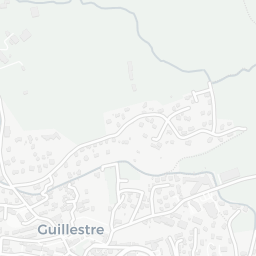



 The “Communauté de communes” of Guillestrois and Queyras is a French community of municipalities created in 2017, gathering 16 villages, with a population of more than 8200 inhabitants. It is characterized by the concentration of SGI’s around two central towns: Guillestre and Aiguilles. The area is also attractive for its natural beauty and wilderness, with a regional nature park, remote valleys/satellites at the foot of Mont Viso. Tourism is a strong feature of the region's economy in both winter and summer periods, with a lack of open services and activities in between seasons.
The “Communauté de communes” of Guillestrois and Queyras is a French community of municipalities created in 2017, gathering 16 villages, with a population of more than 8200 inhabitants. It is characterized by the concentration of SGI’s around two central towns: Guillestre and Aiguilles. The area is also attractive for its natural beauty and wilderness, with a regional nature park, remote valleys/satellites at the foot of Mont Viso. Tourism is a strong feature of the region's economy in both winter and summer periods, with a lack of open services and activities in between seasons.
Pilot Solutions
1) Developing the economic attractiveness of the territory through an improved access to housing - the aim is to create a community of professionals and connect them with local homeowners and residents to provide housing matchmaking solutions, through organization of housing events.
2) Community promotion by addressing the issue of demographic ageing and preventing the isolation of vulnerable groups (the elderly), particularly in winter, by creating a11 network of connected actors, sharing information, and organizing caring visits with the participation of young volunteers.
-
Creating a Mobility Center Service in the Communauté de communes des Baronnies en Drôme Provençale (FR)
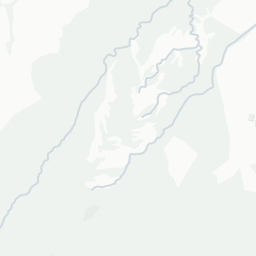




 The Communauté de communes des Baronnies en Drôme Provençale (Département de la Drôme, Région Auvergne-Rhône-Alpes) test area was created in 2017, gathering 67 villages with 21660 inhabitants. It's a sparsely populated area, with a pre-Alpine topography and remarkable landscapes. The region is characterized by the diversity of its produce : winegrowing, olive-growing and aromatic plants protected by several Protected Designations of Origin. The Baronnies is also touristic region.
The Communauté de communes des Baronnies en Drôme Provençale (Département de la Drôme, Région Auvergne-Rhône-Alpes) test area was created in 2017, gathering 67 villages with 21660 inhabitants. It's a sparsely populated area, with a pre-Alpine topography and remarkable landscapes. The region is characterized by the diversity of its produce : winegrowing, olive-growing and aromatic plants protected by several Protected Designations of Origin. The Baronnies is also touristic region.
Pilot activities:
1) Creating a Mobility Center Service, acting as an interface between users and public on collaborative transport. The Center will provide information on all the possibilities for getting around, depending on time and economic factors, and would link shared active and collaborative mobility via fluid intramodality, with a solidarity component for a fragile and poor public.
2) Development of a Mapping System to increase the visibility of the SGI’s -
Green Point Living Lab in the Pomurje Region and and Podravje Region (SI)

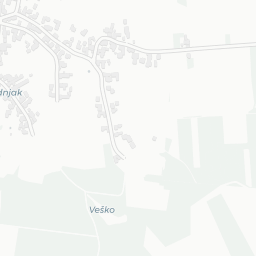



 With an attractive location, bordering Austria in the north, Hungary in the east, and Croatia in the south, Pomurje region nurtures close ties with the neighboring countries in the fields of economy, development, and culture. It lies in the fifth European transport corridor, representing one of the most important transport routes in Europe. Modern railways and highways connect the region with Central European economic, transport, and logistics centers. Transport routes and infrastructure connections offer the opportunity for further investments in the field of industry, logistics, business zones associated service activities development, and nature- and people-related tourism. It is the most suitable area for food production in the country, therefore particular attention is given to stimulation of agricultural production. Similar to the entire Slovene agriculture, Pomurje agriculture is characterized by the contradiction between the socio-economic and land structure in the rural area. Very closely connected to food production are gastronomy and tourism, which are also significant sectors in the Pomurje region. The Green Point is a fully operational, largest, and most advanced regional short food supply chain, founded by farmers, involving more than 100 local farmers, food producers, and cooperatives, covering the process of production in a greenhouse and open-air fields, with logistics from own distribution center and different means of sales: gross sale, retail and online. The Green Point delivers food to citizens, public institutions (schools, kindergartens, elderly homes, hospitals, ...), and private organizations (HoReCa sector organizations). In 2023, Green Point SFSC became a Living lab, based on a Multi-Actor Approach involving input from the industry and technology providers, primary producers, food businesses, consumers, citizens, local authorities, and other actors, and promoted with a view to co-create innovative systemic solutions in support of food systems sustainability goals. The Green Point Living Lab implements innovative models and technologies relevant to the Smart villages & Rural development concepts, piloting and demonstrating technological (blockchain, big data, …), economic (circular economy, Food loss and waste, …), and social (consumer participation, public awareness, food sharing, food locality, …) innovations.
With an attractive location, bordering Austria in the north, Hungary in the east, and Croatia in the south, Pomurje region nurtures close ties with the neighboring countries in the fields of economy, development, and culture. It lies in the fifth European transport corridor, representing one of the most important transport routes in Europe. Modern railways and highways connect the region with Central European economic, transport, and logistics centers. Transport routes and infrastructure connections offer the opportunity for further investments in the field of industry, logistics, business zones associated service activities development, and nature- and people-related tourism. It is the most suitable area for food production in the country, therefore particular attention is given to stimulation of agricultural production. Similar to the entire Slovene agriculture, Pomurje agriculture is characterized by the contradiction between the socio-economic and land structure in the rural area. Very closely connected to food production are gastronomy and tourism, which are also significant sectors in the Pomurje region. The Green Point is a fully operational, largest, and most advanced regional short food supply chain, founded by farmers, involving more than 100 local farmers, food producers, and cooperatives, covering the process of production in a greenhouse and open-air fields, with logistics from own distribution center and different means of sales: gross sale, retail and online. The Green Point delivers food to citizens, public institutions (schools, kindergartens, elderly homes, hospitals, ...), and private organizations (HoReCa sector organizations). In 2023, Green Point SFSC became a Living lab, based on a Multi-Actor Approach involving input from the industry and technology providers, primary producers, food businesses, consumers, citizens, local authorities, and other actors, and promoted with a view to co-create innovative systemic solutions in support of food systems sustainability goals. The Green Point Living Lab implements innovative models and technologies relevant to the Smart villages & Rural development concepts, piloting and demonstrating technological (blockchain, big data, …), economic (circular economy, Food loss and waste, …), and social (consumer participation, public awareness, food sharing, food locality, …) innovations.
Pilot Solutions:
1) Co-create a transnational community that will change both the practices and the perception of smart rural areas, through facilitating capacity building of the selected rural area, promoting existing digital tools and solutions, and developing innovative and interactive digital tools to promote the "smart transition" of Alpine areas, considering community and sustainability aspects.
2) Transfer some of the most successful practices from the past Smart Villages project, among which the practice from Pomurje region is the most popular in Slovenia. -
Löffingen (DE) as a lighthouse test area
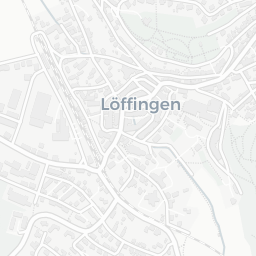



 The city of Löffingen counts 7672 inhabitants (2019) and is situated in the Black Forest area in Baden-Württemberg (Germany). Löffingen can be reached from Freiburg im Breisgau in about 50 km. The city has a dispersed settlement structure and consists of the high-altitude health resort Dittishausen and other five city areas namely Bachheim, Göschweiler, Reiselfingen, Seppenhofen and Unadingen. The area of the municipality is 8,803 ha, of which approx. 3,900 ha is forest and agricultural land. Löffingen was the pilot municipality of RVSO in the Interreg-V project SmartVillages. Within the framework of this project, several "smart" projects have already been implemented and a digital strategy has been drafted. That is why Löffingen, as an Lighthouse Test Area, is a role model for the Follower Test Area Elzach and Winden im Elztal.
The city of Löffingen counts 7672 inhabitants (2019) and is situated in the Black Forest area in Baden-Württemberg (Germany). Löffingen can be reached from Freiburg im Breisgau in about 50 km. The city has a dispersed settlement structure and consists of the high-altitude health resort Dittishausen and other five city areas namely Bachheim, Göschweiler, Reiselfingen, Seppenhofen and Unadingen. The area of the municipality is 8,803 ha, of which approx. 3,900 ha is forest and agricultural land. Löffingen was the pilot municipality of RVSO in the Interreg-V project SmartVillages. Within the framework of this project, several "smart" projects have already been implemented and a digital strategy has been drafted. That is why Löffingen, as an Lighthouse Test Area, is a role model for the Follower Test Area Elzach and Winden im Elztal.
Pilot Solutions:
Löffingen serves for the FTAs Elzach und Winden im Elztal as an example of a successful digitisation process. An exchange between the FTAs and Löffingen is to take place in the project. -
Elzach (DE) to become more digital and smarter

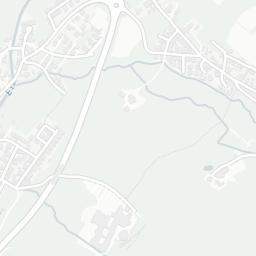



 The city of Elzach counts 7332 inhabitants and is situated in the Elzvalley which is part of the Black Forest area in Baden-Württemberg. Elzach can be reached from Freiburg im Breisgau in about 30 km or by train via the Breisgau S-Bahn. The city has a dispersed settlement structure and consist of five city areas namely Elzach, Katzenmoos, Oberprechtal, Prechtal and Yach. While the northern side of the Elz-valley rises steeply, the southern side is much flatter. In the year 2018 around 2144 people commuted out and 1300 commuted in the city of Elzach. Tourism has gained in importance in the Elz Valley in the recent years. Elzach is awarded as a “climatic health resort” and offers sports and leisure activities. Elzach has over 80 clubs from the fields of music, art, sport, and culture. Voluntary commitment is strong and has a long tradition.
The city of Elzach counts 7332 inhabitants and is situated in the Elzvalley which is part of the Black Forest area in Baden-Württemberg. Elzach can be reached from Freiburg im Breisgau in about 30 km or by train via the Breisgau S-Bahn. The city has a dispersed settlement structure and consist of five city areas namely Elzach, Katzenmoos, Oberprechtal, Prechtal and Yach. While the northern side of the Elz-valley rises steeply, the southern side is much flatter. In the year 2018 around 2144 people commuted out and 1300 commuted in the city of Elzach. Tourism has gained in importance in the Elz Valley in the recent years. Elzach is awarded as a “climatic health resort” and offers sports and leisure activities. Elzach has over 80 clubs from the fields of music, art, sport, and culture. Voluntary commitment is strong and has a long tradition.
Pilot Solutions:
1) A citizens' app will be developed to serve as a simple and user-friendly medium for communication between the city administration and citizens. Citizens will be able to use the app to submit enquiries or applications to the administration, e.g. via a digital registration for kindergarten and school places or a deficiency report. Conversely, the citizens' app will make it easier for the city administration to inform its citizens in a short, digital way.
2) Mobile youth work and services, aiming to provide young people with flexible services. This includes digital offers combined with physical spaces. In this way, young people are reached via digital channels and at the same time "non-virtual" meeting places are created.
6) Sensor technology for street greenery: Urban trees and street greenery need to be watered regularly to ensure that they are supplied with sufficient water, especially during periods of low rainfall and in times of climate change. With the help of sensors installed on the trees or green strips, irrigation will be controlled according to need.
7) Co-working space: Working from a distance, so-called remote work, has increased in recent years. Instead of commuting, people also work at home. In addition, co-working spaces are gaining in importance. A co-working space will be established in Elzach, for example on the upper floor of the Ladhof. A booking app will be used to facilitate administration. -
Better communication and inter-municipal cooperation in Winden im Elztal (DE)

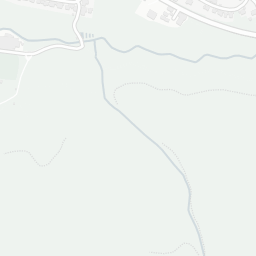



 The municipality of Winden im Elztal counts 2846 inhabitants and is situated in the Elzvalley which is part of the Black Forest area in Baden-Württemberg/Germany. Winden im Elztal can be reached from Freiburg im Breisgau in about 30 km or by train via the Breisgau S-Bahn. The municipality has a dispersed settlement structure and consist of two city parts namely Oberwinden und Niederwinden. While the northern side of the Elz-valley rises steeply, the southern side is much flatter. Most of the working population in Winden commutes to work in the surrounding towns and municipalities. Tourism has gained in importance in the Elz Vallay in recent years. Winden im Elztal is awarded as a "climatic health resort “and offers sports and leisure activities.
The municipality of Winden im Elztal counts 2846 inhabitants and is situated in the Elzvalley which is part of the Black Forest area in Baden-Württemberg/Germany. Winden im Elztal can be reached from Freiburg im Breisgau in about 30 km or by train via the Breisgau S-Bahn. The municipality has a dispersed settlement structure and consist of two city parts namely Oberwinden und Niederwinden. While the northern side of the Elz-valley rises steeply, the southern side is much flatter. Most of the working population in Winden commutes to work in the surrounding towns and municipalities. Tourism has gained in importance in the Elz Vallay in recent years. Winden im Elztal is awarded as a "climatic health resort “and offers sports and leisure activities.Pilot Solutions:
1) Multifunctional meeting place and civic center for citizens to host co-working and commercial activities, cultural events and learning and training activities.
2) Neighborhood platform to disseminate regional information quickly and easily
3) Training opportunities on digital media
-
Smart network to collect, store and visualize community data in Lienzer Talboden (AT)

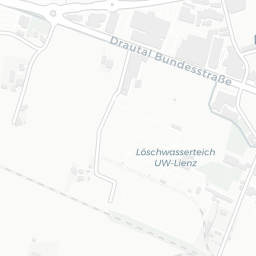



 The district of East Tyrol belongs to the federal province of Tyrol and is characterized by its geographically remote location from North Tyrol. The district capital Lienz can be reached by car from the provincial capital Innsbruck in about three hours, whereby one must either pass through the Felbertauern tunnel or detour via neighboring South Tyrol. In the past, the Region Lienzer Talboden had to struggle with emigration. For this reason, measures for regional development are particularly important, also considering digitalization.
The district of East Tyrol belongs to the federal province of Tyrol and is characterized by its geographically remote location from North Tyrol. The district capital Lienz can be reached by car from the provincial capital Innsbruck in about three hours, whereby one must either pass through the Felbertauern tunnel or detour via neighboring South Tyrol. In the past, the Region Lienzer Talboden had to struggle with emigration. For this reason, measures for regional development are particularly important, also considering digitalization.
Pilot Solutions: 1) Establish a LoRaWAN network with gateways and sensors to collect, store and visualize community data. The pilot solution will enable smart transition through real-time analysis of data collected from community buildings and enable cost-efficient work and provide a better basis for decision-makers. -
Developing a smart and ecological connectivity in Lower Austria (AT)


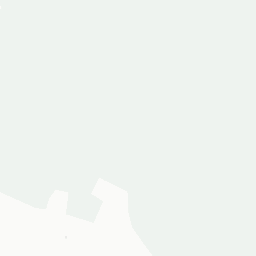


 Lower Austria is a diverse region in Austria characterized by its rich landscapes, from the lush Danube River valleys to the rolling hills of the Weinviertel wine region and the picturesque Wachau Valley. The region faces challenges such as preserving its historic sites and natural beauty in the face of urbanization and modern development. The Vienna Woods provides a haven of greenery and recreational opportunities near the capital city of Vienna. Agriculture and viticulture thrive in the fertile plains, while sustainable land use practices are crucial to maintain a harmonious balance between economic growth and environmental preservation. The Lower Austrian Alps offer breathtaking mountain vistas and outdoor adventure, presenting both opportunities and challenges for responsible tourism and conservation. The TA is already heavily affected by the consequences of climate change. In addition to further promoting climate protection measures, such as reducing greenhouse gas emissions, they must learn to cope with changing climatic conditions.
Lower Austria is a diverse region in Austria characterized by its rich landscapes, from the lush Danube River valleys to the rolling hills of the Weinviertel wine region and the picturesque Wachau Valley. The region faces challenges such as preserving its historic sites and natural beauty in the face of urbanization and modern development. The Vienna Woods provides a haven of greenery and recreational opportunities near the capital city of Vienna. Agriculture and viticulture thrive in the fertile plains, while sustainable land use practices are crucial to maintain a harmonious balance between economic growth and environmental preservation. The Lower Austrian Alps offer breathtaking mountain vistas and outdoor adventure, presenting both opportunities and challenges for responsible tourism and conservation. The TA is already heavily affected by the consequences of climate change. In addition to further promoting climate protection measures, such as reducing greenhouse gas emissions, they must learn to cope with changing climatic conditions.Pilot solutions:
1) Strengthening the KLAR! Network, through regular meetings providing a platform for sharing experiences and receiving inputs from speakers on current topics. A newsletter will inform KLAR! 10 Regions in Lower Austria: Waldviertler Kernland, Thayaland, Unteres Traisental & Fladnitztal, Bucklige Welt – Wechselland, Amstetten Nord, Amstetten Süd, Tullnerfeld OST, Gölsental, Südliches Weinviertel, Pielachtal, Kampseen, Waldviertler Hochland, Region Horn, Retzer Land, Wagram.
2) Videos: "What is Climate Change Adaptation?" - introductory explainer videos will be created to provide the target audience with a clear understanding of climate change adaptation in Lower Austria
3) Best Practice Examples, to showcase successful climate change adaptation initiatives in Lower Austria, encompassing a wide range of areas and aspects of climate change adaptation
4) Project Implementation - Climate-Fit action guides present successful climate adaptation project implementations in KLAR! regions.
-
Smart mobility and smart economy workshops to face demographic challenges in the Region Luzerne West

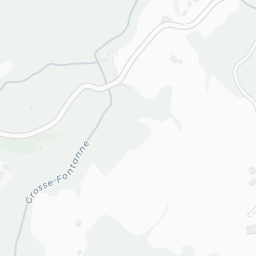



 The Region Luzerne West is a rural area with different valleys around a big hillside called “Napf”. It is consisted of several small villages which face demographic challenges, as well as challenges in terms of mobility and use of empty stores in the village centers. Napfbergland is a beautiful, turistical area. During weekends people from nearby cities come to the area to enjoy the nature and beauty of the Napf. But they usually they get there by car which leads to roads blockages, noise pollution, and many visitors.
The Region Luzerne West is a rural area with different valleys around a big hillside called “Napf”. It is consisted of several small villages which face demographic challenges, as well as challenges in terms of mobility and use of empty stores in the village centers. Napfbergland is a beautiful, turistical area. During weekends people from nearby cities come to the area to enjoy the nature and beauty of the Napf. But they usually they get there by car which leads to roads blockages, noise pollution, and many visitors.
Pilot solutions:1) Organization of workshops with a focus on smart mobility – a set of workshops to achieve a smarter mobility in Napfbergland (Romoos, Doppleschwand, Luthern, Menznau, Hergiswil bei Willisau communities), with the participation of Napfbergland Association, will be delivered.
2) Organization of workshops with a focus on smart economy – a set of workshops in the 27 communities in the Region Luzerne West will be organized to achieve a smarter economy in their village centers.
-
Developing technologies to strengthen local Alpine identity in the Gran Paradiso National Park and Mont Avic Regional Park (IT)
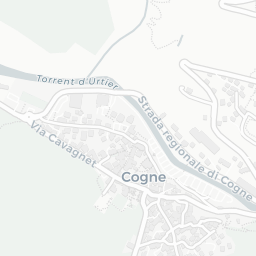



 As the Aosta Valley is a mountainous region, it is difficult to provide adequate services and to maintain the population in the valleys, especially in the small villages, and to foster their economic development, particularly in tourism. New technologies offer an opportunity for the local development of territories, to populate/repopulate mountain areas through new jobs and professions that can be carried out remotely. This has given rise to the phenomena of remote work and digital nomads. A further possibility is offered by technologies to develop the active participation of the population through citizen science and other e-citizenship activities. Finally, technology can contribute to the digital transformation of local culture and identity by transmitting and at the same time transmuting local knowledge.
As the Aosta Valley is a mountainous region, it is difficult to provide adequate services and to maintain the population in the valleys, especially in the small villages, and to foster their economic development, particularly in tourism. New technologies offer an opportunity for the local development of territories, to populate/repopulate mountain areas through new jobs and professions that can be carried out remotely. This has given rise to the phenomena of remote work and digital nomads. A further possibility is offered by technologies to develop the active participation of the population through citizen science and other e-citizenship activities. Finally, technology can contribute to the digital transformation of local culture and identity by transmitting and at the same time transmuting local knowledge.
Pilot Solutions:
1) "Workcation" for digital nomads: exploring new interactions between work and holiday time for workers and tourists, developing a concept for a new model of hospitality in natural and protected areas that favors the creation of new potential digital workers and the development of related coworking spaces
2) Digital technologies to promote local products and their authenticity: explore the interaction between tourists/habitants/producers, promote and communicate local and protected area products, exploiting digital technologies for the promotion, tracking and creation of short supply chains
3) Active involvement in the protection of natural resources and Participatory Science: exploring the interaction between natural areas and their inhabitants to involve them in biodiversity protection and awareness-raising, e.g. through initiatives using apps for biodiversity monitoring (e.g. iNaturalist)
4) Community and cultural heritage: exploring the possible interactions between older and newer generations to defend and hand down the cultural heritage of communities through digitization supporting the elderly population in using new digital technologies and access to PA services
5) Digitally connected shared spaces: to explore the possible interactions between physical and digital spaces and how it is possible to provide the population with places where on the one hand they can receive support for services and practices in digital mode, and on the other hand these places can also be points where innovative practices can be implemented. -
Smart environment and agricolture: a hub for training and educational initiatives in the Municipality of Cogorno (IT)

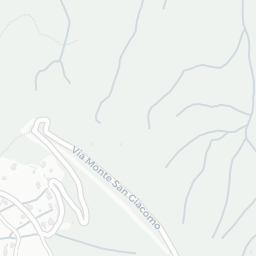




The lighthouse test area is the municipality of Cogorno which is one of the access gates to Fontanabuona Valley (Follower Test area). The “Val Fontanabuona” is one of the main valleys of the Metropolitan City of Genoa, it includes 15 municipalities, occupies a surface of 249,37 km² with a population of 28.844 inhabitants. The municipality of Cogorno extends for about 9 km2, gathers 5.689 inhabitants and is 3 km from the sea. It is a municipality of intermediate size in a suburban area characterized by a more urbanized part in the flat area and a hilly area with a more rural vocation.
Fontanabuona Valley is known for the artisan activities linked to the carpentry sector, as well as for the extraction and processing of slate. In the lower valley near the river, where large-scale distribution companies, industries in the agri-food and floricultural sectors are found. There are very diversified companies, but solid and largely innovative, some at the cutting edge, others are niche in the craft sector. The hilly areas of the valley has agricultural activities, a traditional weaving company and outdoor tourism activities.
Pilot solutions:
1) Pilot solutions will be developed by the stakeholder group during the meetings that are taking place and will take place in the future. Currently, some topics have been identified on which activities will be carried out in the lighthouse test area through the involvement of the follower test areas.The themes are climate change, tourism and school orientation.
2) The “Water Portal”, a recently established eco-sustainable structure, in the Municipality of Cogorno, will become a hub for training and educational initiatives. It will facilitate programs about agricultural, environmental, and tourism research, including digital tools for an enhanced learning experience.
Videos
Downloads
-
Download
The SmartCommunity project aims to support Alpine rural areas through digitalisation and the creation of smart, sustainable and resilient communities.
The work package "Innovation Tools for SmartCommUnity" (one of the workpackage of the SmartCommUnity project ) have developed this tool for the TAs involved in the project to support them in implementing gamification techniques on their own scale and to help them understand this approach.
The guidelines for gamification defined as the use of game mechanics in non-game contexts to increase motivation and engagement of participants. Gamification can be useful for engaging local communities, developing creativity and collecting data. The guidelines stress the importance of setting clear objectives before adopting these techniques, which can range from using serious games to offering incentives during events.
Key principles to follow include creating a common story, providing continuous feedback to participants, using rewards to maintain motivation and the importance of promoting social interaction. A gradual approach helps to avoid participants becoming bored or demotivated.
-
Handbook on Gamification and Civic Engagement Tools and initiatives. The SmartCommUnity project partners are willing to develop a digital platform that meet the need of creating Smart communities that could exchange practice and engage towards smart village pathway, adopting innovative tools embracing the functions of both civic engagement tool and gamification approach. In order to attend this objective, the partners responsible for the Innovation Tools work package (ADRETS, SCCH, Poliedra, University of Ljubljana) for SmartCommUnity, with the collaboration of all the project partners have been working on the state of the art of civic engagement initiatives currently in place. The aim is to understand if this approach is suitable, relevant and if it is adding positive value to the purpose of engaging the smart community within the SmartCommUnity project and beyond, within the development and dissemination of the smart village approach.Download
-
Download
Through a set of activities, Test Activities and Networking for SmartCommUnity sets to foster activities, in the 6 Smartness Dimensions, for smart community-led transition in Test Areas (TAs), and to create national and regional networks between more advanced (lighthouse test areas – LTAs) TAs and less advanced (follower test areas – FTAs) TAs in each country. All activities are designed to facilitate capacity building, community exchanges of best practices and lessons learnt and mobilization of community energies.
-
Developing an innovative community-based data approach to rural digital ecosystems, moving beyond the concept of local heroes to enhance inclusiveness and access. To achieve this, the report is a fundamental source of data-related concepts to promote a community-based approach in Test Areas (TAs) to establish a transnational rural digital ecosystem. This approach will not only enhance inclusivity and accessibility across the SmartCommUnity project but also serve as a source of inspiration for Follower Test Areas to follow the lead of Lighthouse Test Areas.Download
-
The SmartAlps Webinar on “Mobility solutions in the Alps" is an experience organized by the Swiss Center for Mountain Regions – SAB, partner of the SmartCommUnity project. Improving the mobility offer is a high priority for many municipalities, it creates an important link to other basic services and is important for economic development and leisure activities. In this webinar municipalities and other public authorities, gained insight into the most important steps of mobility service development in a municipality and what a successful community call-a-bus system can look like. Thank to Tina Keller – Trafiko Mobility Consulting, local actors discovered the setting up a mobility offer in the Region Lucerne West and the main steps in participation and learnings for municipalities. Andreas Kronawitter – Managing director of Mybuxi mobility systems shown the best practices of “mybuxi” – a widely implemented call bus system using digital technologies to a maximum. During the session participants also exchanged experiences and best practices on mobility finding solutions to problems on governance, financing and planning activities. Please find below documents that were presented and elaborated during the webinarDownload
-
The SmartCommUnity project aims to empower rural areas in Europe by showcasing effective uses of smart technologies to promote sustainable development and enhance community identity. This collection of good practices offers valuable models from Lighthouse Test Areas (LTAs) to inspire and guide Follower Test Areas (FTAs) in implementing technology that improves services and supports local economies. Focusing on Alpine and mountain regions, the project encourages cross-border collaboration and knowledge sharing, fostering a collective vision for resilient rural communities. Ultimately, it aims to help rural areas turn challenges into opportunities for a sustainable and culturally rich future.Download
-
This Deliverable demonstrates how our platform can use collaborative approaches to address some of the most important rural challenges for our Test Areas (TAs), with a novel focus on incorporating gamification techniques to improve engagement and participation. For us, it is important to collect data at this stage, as we will use it later for several important tasks that will allow us to have a much more realistic understanding of the TAs and enable stakeholders to take better action in facing these rural challenges.Download
-
Download
The report explores the ways to strengthen and expand the Smart Alps network, which was established by Action Group 5 (AG5) within the framework of the EU Strategy for the Alpine Region (EUSALP). This report aims to present both a retrospective—summarizing the activities and achievements of the first two years of the SmartCommUnity project across various areas of intervention—and a forward-looking perspective, outlining the next steps planned to reinforce and expand the Smart Alps network. The main goal is to promote closer cooperation among Alpine regions by encouraging innovation, digitalization, and sustainability through an integrated and transnational approach. The document highlights the importance of building a collaborative platform that facilitates the exchange of experiences and best practices among local actors, public institutions, businesses, universities, and citizens. The report analyzes the current dynamics of the Smart Alps network, identifying its strengths and areas for improvement, and proposes concrete actions to make it more inclusive and effective. These include thematic workshops, shared digital tools, and the active engagement of less-involved regions. A multi-level governance structure is also proposed to ensure coordinated and participatory management of activities. Finally, the document presents a detailed roadmap to guide the network’s development through 2027, with the aim of establishing Smart Alps as a strategic platform to address common challenges in the Alpine region.
-
Download
Alpine rural areas face specific challenges in the digital era, such as limited infrastructure and dispersed populations, but also hold strong potential for innovation in sectors like tourism, agriculture, and renewable energy. The SmartCommUnity project addresses these issues by promoting community-driven, inclusive, and sustainable digital transitions. A key part of this initiative is the WPTAN, which supports smart transitions in selected test areas (TAs) by connecting more advanced Lighthouse Test Areas (LTAs) with less advanced Follower Test Areas (FTAs). WPTAN activities include developing smart solutions, creating networks, and fostering knowledge exchange. This deliverable reports on the progress made up to Period 5 of the project, focusing on results, best practices, and the impact of local and regional actions. It also outlines how data was collected and structured through a shared template, ensuring comparability across partners. Contributions are divided into two sections: implemented smart activities and LTA–FTA meetings, providing a detailed picture of the project’s achievements.
-
Download
This deliverable outlines the development of a user-oriented tool aimed at supporting smart transitions in Alpine communities as part of the SmartCommUnity project. It builds on existing methodologies, particularly the SEROI+ framework, and tools already available on the Smart-Alps.eu Innovation Portal. The core innovation is the Data Community component—a digital solution that enables communities to upload, visualize, and link local data to impact indicators. This addresses a key gap identified in earlier project phases, where impact assessment was underdeveloped. The component transforms co-created goals into measurable outcomes, helping communities evaluate socio-economic and environmental effects of digital initiatives. It supports evidence-based decision-making and fosters community engagement. The tool is modular, designed for WordPress integration, and easily adaptable for use beyond the original test areas. Overall, it strengthens the project’s goal of enabling inclusive, data-driven smart transitions.
-
Download
This Deliverable introduces the Data Analysis Component, a WordPress plugin developed as a comprehensive software solution that consolidates multiple metrics and functionalities into a unified dashboard. This tool enables the analysis of user sentiment, the creation of dynamic charts, and the aggregation of forum data for export, among other features. It allows community managers to monitor user registrations, comment activity, and server performance. Additionally, the plugin integrates with GamiPress to support points-based leaderboards and tracks the performance of newly published content. An optional shortcode feature extends the visibility of the dashboard beyond the admin interface, making it adaptable for various presentation and communication contexts.


